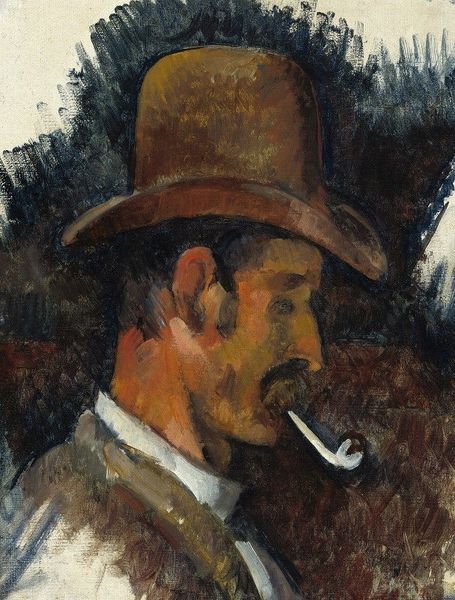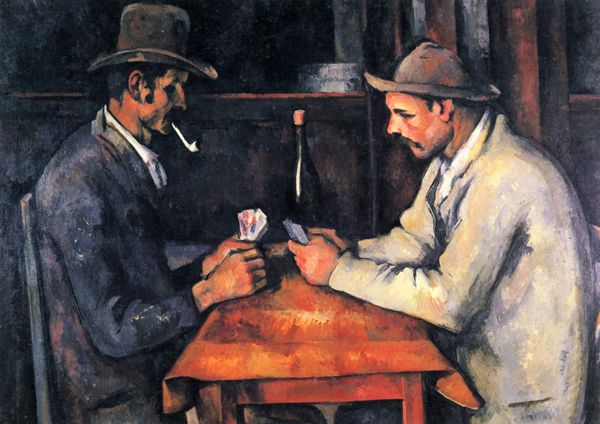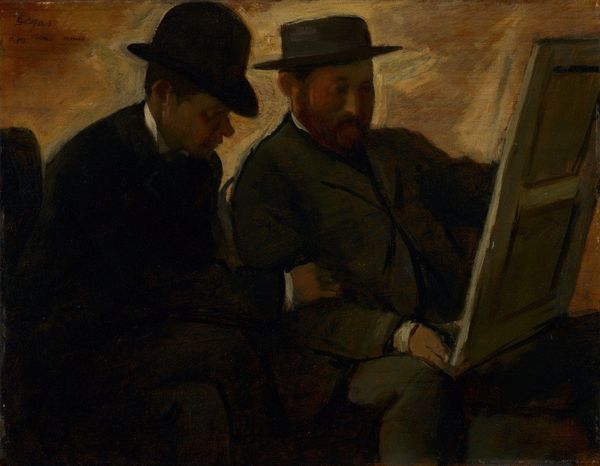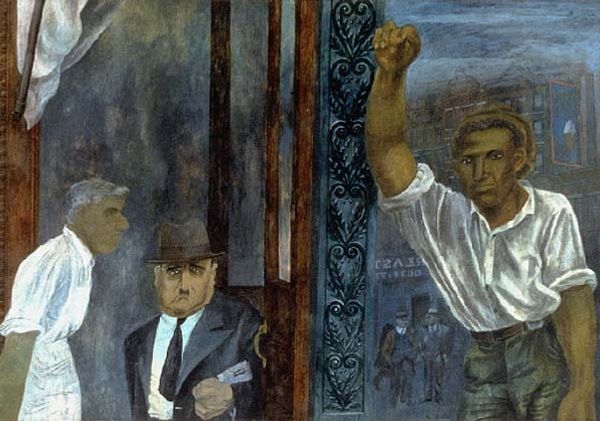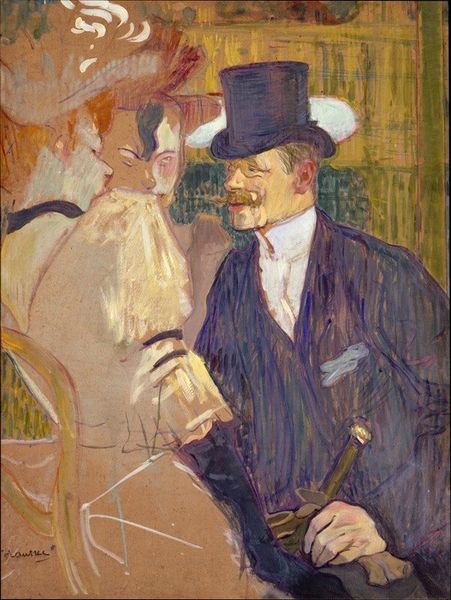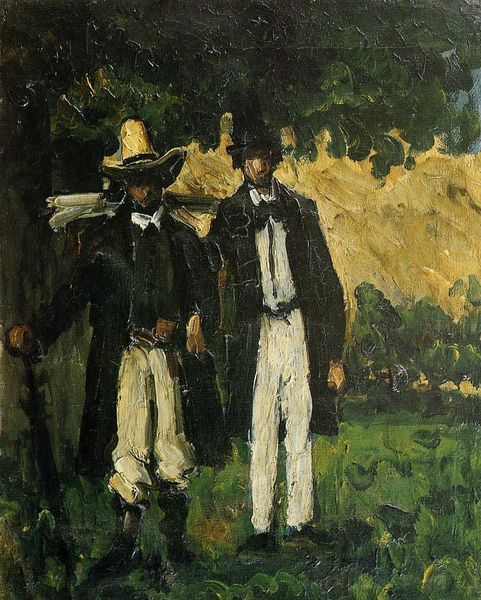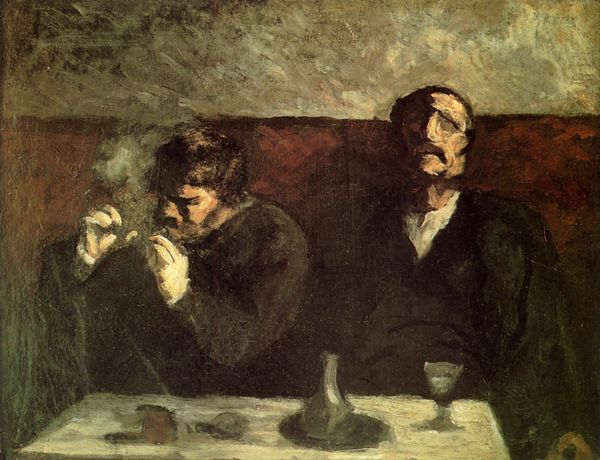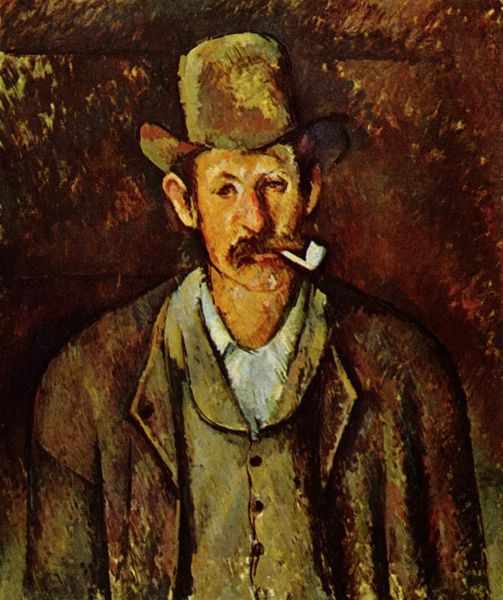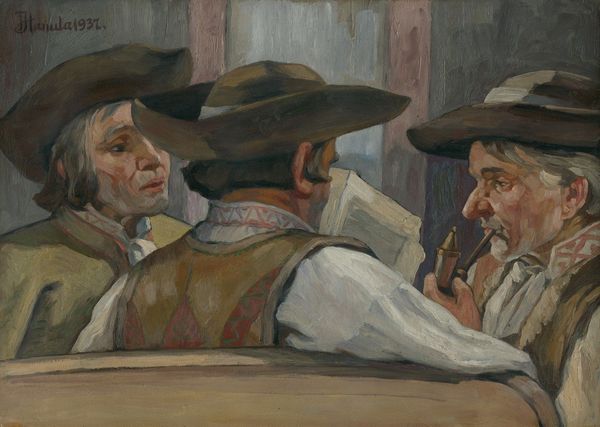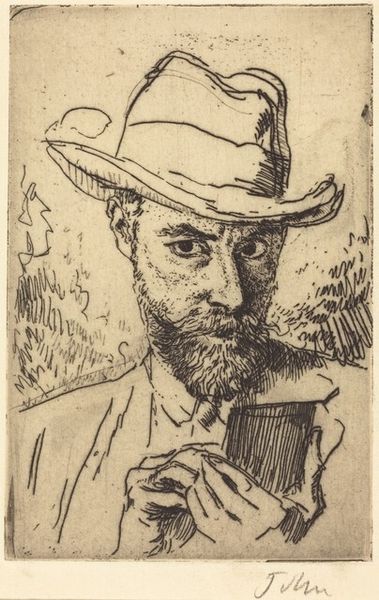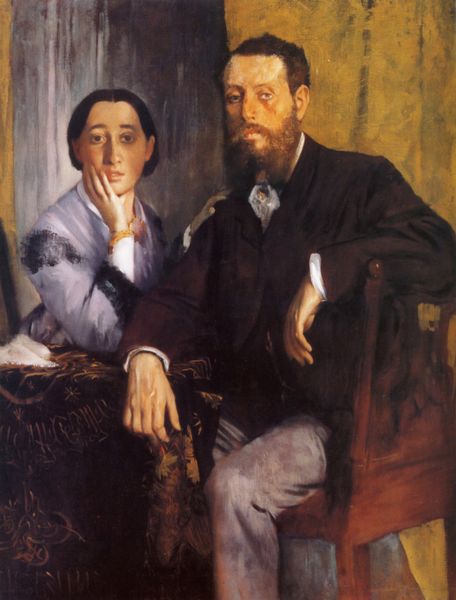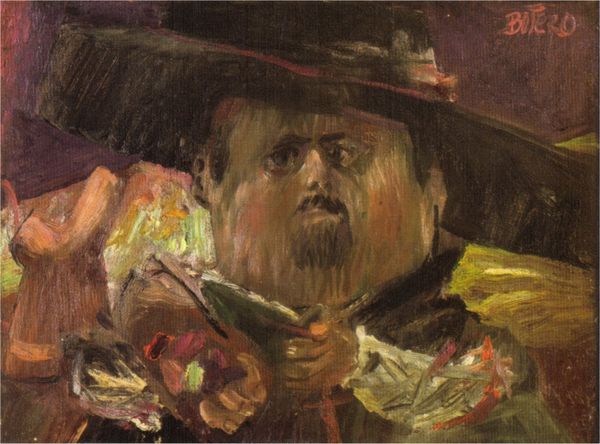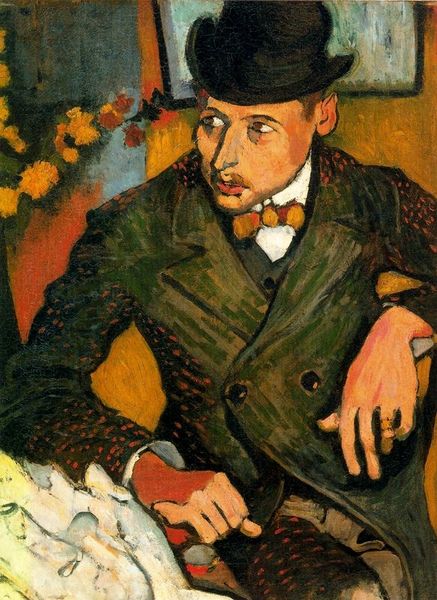
Copyright: Public domain
Editor: Here we have "Lajos und Odon," an oil painting from 1918 by József Rippl-Rónai. I find the composition quite striking, particularly the contrast between the two figures. How do you interpret this work? Curator: This piece really encapsulates the spirit of intimacy characteristic of the post-Impressionist movement. I see it as a snapshot into the shifting social dynamics and constructions of masculinity present in early 20th-century Europe. Consider the body language—the man with the cigar exudes a sort of detached power, a pose informed by patriarchal norms. Editor: And the other, appearing to rub his eye, is in a more passive posture? Curator: Precisely. His gesture and softened gaze hint at a different articulation of male identity, perhaps a critique of the stoic ideal. Rippl-Rónai, situates them in a way that invites viewers to interrogate those societal expectations, wouldn’t you agree? The clothing— the red flower on the suit – what does that say about traditional masculinity? Editor: It disrupts the status quo. So, are you suggesting Rippl-Rónai intentionally challenges prevailing masculine archetypes? Curator: Yes, definitely, through these carefully constructed juxtapositions, and even through his stylistic choices! The intimist and post-impressionistic style flattens form, drawing focus to the internal world as well. Rippl-Rónai gives voice to an introspective dialogue about selfhood. What does their relation reveal of shifting cultural norms? Editor: It's like he uses portraiture to push against restrictive definitions, which I guess opens the door for diverse identities and challenges us to confront expectations about ourselves, too! Curator: Exactly! By capturing that subtle tension and internal complexity, Rippl-Rónai offers a powerful, lasting message of self-discovery and the dismantling of prescribed social roles. It speaks volumes.
Comments
No comments
Be the first to comment and join the conversation on the ultimate creative platform.

